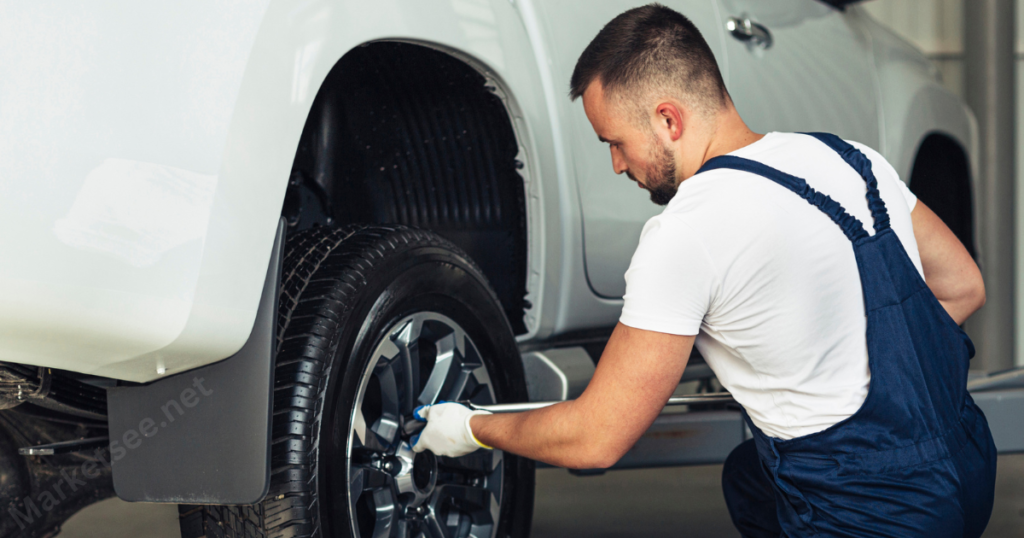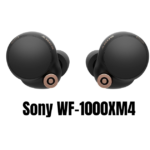
Introduction
Without proper positioning you are putting the life of your friends and family as well as yourself in danger.
And not having proper knowledge on tire positioning you might not be able to maintain your tires longevity. And you will have to change them once in a while.
But with all of this information available on tire positioning it is a lot of difficult to actually identify which information is correct or not. And some guides aren’t well researched and if you follow their tips without confirming you might be getting yourself in trouble.
But after researching everything I have written which I believe is the perfect guide that contains so many hidden gems of information that can’t be found without reading.
Also I have putted and tire maintenance checklist that is going to help you a lot. And I also have explained why you should choose a tire shop that uses auto parts pos software for their inventory.
But, before everything, let’s just understand the importance of tire positioning.
Importance of Tire Positioning
Safety: Proper tire positioning ensures that your vehicle behaves predictably on the road. When tires are aligned correctly you are going to have better control over your car which is going to be a plus point for you in emergency situations.
Preventing Uneven Tire Wear: Tire alignment helps prevent uneven wear on your tires. When your tires wear unevenly, it will lead to reduced traction, and decreased handling performance as a result you will need to frequently change your tires.
Reducing Fuel Consumption: Misaligned tires can create additional resistance against your vehicle’s movement. This resistance forces your engine to work harder, leading to increased fuel consumption. Maintaining proper alignment helps optimise fuel efficiency.
Preserving Suspension and Steering Components: Correct alignment reduces stress on suspension and steering components. Misalignment can cause these parts to wear out faster, leading to costly repairs. Regular alignment checks help preserve these vital components.
Enhanced Ride Comfort: Properly aligned tires contribute to a smoother and more comfortable ride. Misalignment can result in vibrations, steering wheel wobble, and an overall less pleasant driving experience.
Maintaining Manufacturer’s Specifications: Vehicle manufacturers design their cars with specific alignment settings to ensure optimal performance, handling, and safety. Maintaining proper alignment helps your vehicle stay within these specifications, ensuring it operates as intended.
Long-Term Cost Savings: While alignment services may seem like an added expense, they are a cost-effective investment in the long run. By preventing premature tire wear, reducing fuel consumption, and avoiding potential suspension damage, alignment services save you money over your vehicle’s lifetime.
Resale Value: A well-maintained vehicle with proper alignment often has a higher resale value. Buyers are more inclined to pay a premium for a car that has been consistently cared for and performs optimally.
Types of Tire Positioning
Front-End Alignment
Usage: Front-end alignment focuses on adjusting the angles of the front wheels only. If you have older vehicles with solid rear axles and adjustable rear suspension then this might be a good option for you.
Situations: Front-end alignment is appropriate when the rear wheels are in good alignment and don’t exhibit significant alignment issues. It’s used for front-wheel-drive vehicles, in which steering and handling solely rely on front wheel power.
Thrust Angle Alignment
Usage: Thrust angle alignment is a specialised type of alignment that considers the relationship between the rear wheels and their effect on the vehicle’s overall alignment. It’s necessary when the rear wheels are not tracking correctly with the front wheels.
Situations: Thrust angle alignment is useful when the vehicle exhibits a tendency to drift or pull to one side, even after a front-end alignment. It’s commonly employed when there is evidence of rear suspension damage, misalignment, or issues with the vehicle’s frame.
Four-Wheel Alignment (or All-Wheel Alignment):
Usage: Four-wheel alignment involves the adjustment of all four wheels to ensure they are parallel and perpendicular to the ground. It’s the most comprehensive alignment type and is used in vehicles with adjustable rear suspension.
Situations: Four-wheel alignment is suitable for most vehicles, particularly those with independent rear suspensions or all-wheel-drive systems.
Four wheels are suggested when you have issues like handling, uneven tire wear, or when new tires are installed.
Camber Adjustment
Usage: Camber is the angle of the wheel concerning vertical alignment, and it refers to whether the top of the wheel leans inward (negative camber) or outward (positive camber).
Camber adjustment is a component of all alignment types but can be addressed specifically for performance or specialty vehicles.
Situations: Camber adjustment is used in high-performance and racing vehicles to fine-tune handling characteristics. Negative camber can improve cornering grip, while positive camber might be used for specific off-road applications.
Toe Adjustment
Usage: Toe alignment refers to the angle at which the wheels point concerning each other when viewed from above.
Situations: Toe adjustment is a crucial part of all alignment types. Correct toe settings ensure that the wheels are parallel and reduce tire wear. However, if you are a car enthusiast and go out for rides, and have some kind of supra or any sports vehicle which you will use for drifting. Then extreme toe-in or toe-out are advisable for better experiment.
Caster Adjustment
Usage: Caster is the angle of the steering pivot when viewed from the side. Caster affects steering stability as well as returnability. Most passenger vehicles have a fixed caster setting and do not require regular adjustment.
Situations: Caster adjustment is typically reserved for heavy-duty trucks, performance vehicles, and specialty applications. This type of positioning can be fine tuned to optimise stability, steering effort, and high-speed handling.
Why should you choose a shop that uses auto parts pos software for tire positioning?
If you choose a shop that uses auto parts pos software then they are more likely to be in-stock of your preferred tire. Because most of their parts ordering and inventory management is handled by these automotive parts pos software. As a result there will not be any kind of miscalculation due to which they will be out-of-stock in mid month.
Tire Maintenance Checklist
Tire Pressure
- Check tire pressure at least once a month and before long trips. Refer to your vehicle’s manual for the recommended pressure.
- Use a reliable tire pressure gauge.
- Inflate or deflate tires as needed to match the recommended pressure.
Tire Tread Depth
- Check tread depth using a tread depth gauge or the “penny test.” Ensure your tread depth is above 2/32 of an inch (1.6 millimetres) for safe driving.
- Look for any uneven wear patterns across the tire.
Visual Inspection
- Examine each tire for cuts, punctures, bulges, or other signs of damage.
- Inspect the sidewalls for cracks or damage.
- Check for embedded objects like nails or screws.
Rotation and Balancing
- Follow the recommended tire rotation pattern outlined in your vehicle’s manual. Typically, this is done every 6,000 to 8,000 miles (or as recommended).
- Regular rotation ensures even tire wear, extending tire life and improving handling.
- Balancing:
- If you experience vibrations or notice uneven wear, have your tires balanced by a professional mechanic.
- Balancing ensures even weight distribution and a smoother ride.
Conclusion
Overall you should consider tire positioning as one of important factors when you want to maintain tires for longevity. Furthermore with different types of positioning you should choose that suits best to your needs. Because wrong tire positioning may cost you a lot. Furthermore make sure the tire shop you choose uses auto parts pos software.






Leave a Reply